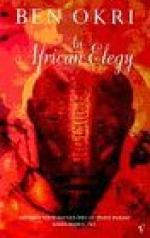|
This section contains 652 words (approx. 2 pages at 400 words per page) |

|
In the early 1940s when Duncan wrote "An African Elegy," a group of poets and critics, who came to be known as the New Critics, helped to determine what kind of poetry would be published and read in the coming decades. Writers associated with this trend in criticism include Allen Tate, R. P. Blackmur, Cleanth Brooks, William K. Wimsatt, and John Crowe Ransom, who edited the The Kenyon Review and whose book The New Criticism (1941) gave the group its name. The members of the New Critics, who were mostly southerners and politically conservative, held formalist views of literature and argued that poems and stories be considered for their inherent value. This meant that literary works should be regarded as self-contained objects, separate from the traditions, histories, and authors that helped to produce them. Though they never established a doctrine as such, New Critics introduced critical principles...
|
This section contains 652 words (approx. 2 pages at 400 words per page) |

|




